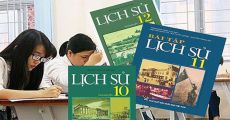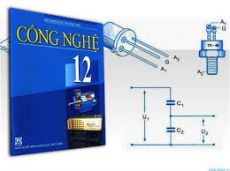Đề thi giữa HK1 môn Tiếng Anh 12 năm 2021-2022
Trường THPT Nguyễn Huệ
-
Find the word which has a different sound in the part underlined
Câu 1:
Find the word which has a different sound in the part underlined: soot, mood, school, moon
A. soot
B. mood
C. school
D. moon
-
Câu 2:
Find the word which has a different sound in the part underlined: clutter, slum, bulb, urban
A. clutter
B. slum
C. bulb
D. urban
-
Câu 3:
Find the word which has a different sound in the part underlined: mindset, handsome, medium, industrial
A. mindset
B. handsome
C. medium
D. industrial
-
Câu 4:
Find the word which has a different sound in the part underlined: accessed, searched, surfed, recorded
A. accessed
B. searched
C. surfed
D. recorded
-
Câu 5:
Find the word which has a different sound in the part underlined: invented, contributed, attributed, welcomed
A. invented
B. contributed
C. attributed
D. welcomed
-
Choose the word which has a different stress pattern from the others
Câu 6:
Choose the word which has a different stress pattern from the others: down-market, organic, replenish, dedicate
A. down-market
B. organic
C. replenish
D. dedicate
-
Câu 7:
Choose the word which has a different stress pattern from the others: perseverance, preservation, environment, eco-friendly
A. perseverance
B. preservation
C. environment
D. eco-friendly
-
Câu 8:
Choose the word which has a different stress pattern from the others: possible, university, secondary, suitable
A. possible
B. university
C. secondary
D. suitable
-
Câu 9:
Choose the word which has a different stress pattern from the others: confident, important, together, exciting
A. confident
B. important
C. together
D. exciting
-
Câu 10:
Choose the word which has a different stress pattern from the others: hospital, mischievous, supportive, special
A. hospital
B. mischievous
C. supportive
D. special
-
Choose the best answer A, B, C or D to complete the sentences
Câu 11:
By 1906, Phan Chu Trinh’s ........ goal was modernization and economic development.
A. elementary
B. comparative
C. primary
D. relative
-
Câu 12:
We admire her ....... to the cause of humanity.
A. achievement
B. dedication
C. awareness
D. concentration
-
Câu 13:
This is a(an) ....... business, so we can’t afford holidays.
A. all-round
B. year-round
C. all-year
D. yearly
-
Câu 14:
There will be a sharp ....... in the urban population of Africa and Asia between now and 2050.
A. rise
B. raise
C. promotion
D. development
-
Câu 15:
In less developed countries, ......... slums form both on thee and within the largest cities.
A. heavily populous
B. densely populated
C. thinly populated
D. most populous
-
Câu 16:
This building is architect’s crowning ............
A. story
B. goal
C. event
D. achievement
-
Câu 17:
There was a knock on the door while we ............ the game show on TV.
A. were enjoying
B. enjoyed
C. had enjoyed
D. had been enjoying
-
Câu 18:
Nguyen Hue made .......... surprise attack against ...... Chinese during Tet, ............. Vietnamese and Chinese Lunar New Year holiday.
A. a – Ø – Ø
B. the – Ø – Ø
C. a – the – the
D. a – the – Ø
-
Câu 19:
Babara is motivated to study ....... she knows that a good education can improve her life.
A. therefore
B. because of
C. because
D. so
-
Câu 20:
It was essential that we ....... the lease before the end of the month.
A. sign
B. signed
C. had signed
D. were signing
-
Choose the word or phrase among A, B, C or D that best fits the blank space in the following passage
The Emergence of Megacities
The urban shift over time has led to the emergence of the megacity – a city with a population of 10 million or more. New York City and Tokyo were the first (21) .......... megacities, both (22) .......... an urban population of over 10 million by the 1950s. But today they are (23) .......... alone in their size. In 2014, there were 28 megacties across the planet – from Sao Paulo, Brazil to Lagos, Nigeria and London, England to Shanghai, China – and all major global regions except Oceania are (24) .......... with megacities.
Most of the megacities in recent years are located in Asia and Africa. In fact, it is where seven of wight newest megacities can be found and where 10 of the 12 (25) .......... megacities in 2030 will be located. From 2010 to 2015, Kinshasa’s population grew (26) .......... over 23 percent, and today over half of 11.6 million residents are under 22 years old. A (27) .......... of factors has led to this growth including migration from rural areas, high fertility rates, and widening of the city’s boundaries. The population is (28) .......... almost all support structure in the city (29) .......... the threat of food shortages, traffic (30) .........., and insufficient education facilities have become an obvious reality.
Câu 21:
(21) ..............
A. knew
B. known
C. familiar
D. acquainted
-
Câu 22:
(22) ...........
A. touching
B. coming
C. getting
D. reaching
-
Câu 23:
(23) .............
A. far from
B. far from it
C. from far and wide
D. so far
-
Câu 24:
(24) ...............
A. indicated
B. marked
C. shown
D. described
-
Câu 25:
(25) ..................
A. projected
B. aimed
C. potential
D. arranged
-
Câu 26:
(26) ....................
A. with
B. to
C. about
D. by
-
Câu 27:
(27) ...............
A. set
B. combination
C. mixture
D. arrangement
-
Câu 28:
(28) ................
A. outrunning
B. outgrowing
C. outnumbering
D. outplaying
-
Câu 29:
(29) .................
A. that
B. which
C. what
D. where
-
Câu 30:
(30) ...............
A. concentration
B. police
C. congestion
D. control
-
Read the passage, and choose the correct answer A, B, C or D for each question
A Tale of Two Cities: Seoul and Dhaka
The city of Seoul, with a population of 10.3 million on 1998, forms part of South Korea’s capital region. As the capital city, Seoul has been at the center of South Korea’s remarkable economic transformation over the last four decades.
In the 1960s, much of South Korea’s industrial growth was focused on greater Seoul, which by 1970 had 52 percent of the country’s industrial workers. The major contributor to this growth was rural-urban migration, which accounted for 50 percent of the country’s urban increase in the 1960s. This very rapid growth of Seoul’s population placed pressure on the city’s infrastructure, leading to marked growth in new settlements, increasing traffic congestion, and growing air pollution. This led the government to adopt a national decentralization strategy in the 1970s that attempted to divert industry to other areas of the country. In the 1980s, continuing efforts were made to decentralize economic activity.
Dhaka’s population of 6.5 million is crowded into 360 square kilometers, creating one of the highest urban densities in the world. Unlike South Korea, Bangladesh has not experienced rapid economic change, and agriculture remains the major component of GDP and the main resource of employment. While general economic conditions have improved somewhat over the last twenty years, Bangladesh is still a very poor country.
Dhaka’s rate of population growth has declined slightly over the past three decades, but it still remains among the highest in Asia (4.2 percent annually). The continuing growth reflects ongoing migration from rural areas to the Dhaka urban region. Recently, the city’s population has also grown as a result of the expansion of its administrative boundaries, a process that added 1 million people to the city in the 1980s. Dhaka’s growth has not been associated with an expansion of productive employment opportunities in relatively high wage areas. Instead, there has been growing employment in the low productivity, low-income sector, such as petty retailing or rickshaw driving.
Câu 31:
The main reason of Seoul’s population growth in the 1960s was .............
A. the development of industry
B. remarkable economic transformation
C. rural-urban migration
D. its role as a capital
-
Câu 32:
All of the following are the problems that the authorities of Seoul had to deal with EXCEPT ...........
A. infrastructure
B. rural-urban migration
C. traffic congestion
D. housing
-
Câu 33:
We can infer from the passage that the reason of the national decentralization strategy in the 1970s and 1980s in Seoul is that .....................
A. other regions demanded for industry development
B. there were no industrial complexes in the south
C. it would place pressure on other cities
D. Seoul seemed to be destroyed its capacity
-
Câu 34:
All of the following are true about Dhaka EXCEPT that ...................
A. its population always increase steadily
B. its urban growth rate is one the highest in the world
C. people live mainly on agriculture
D. many people live in poverty
-
Câu 35:
One of the differences between the urban growth between Seoul ans Dhaka is ...........
A. rural-urban migration
B. urban boundary extension
C. employment opportunities
D. high urban densities
-
Use the words or phrases given to write meaningful sentences about Alexandre Yersin
Câu 36:
1894/ Alexandre Yersin/ demonstrate/ link/ between/ human disease/ rats/ a vector/ epidemic.
A. At 1984, Alexandre Yersin demonstrated the link between human disease and rats, a vector of the epidemic.
B. In 1984, Alexandre Yersin demonstrated the link between human disease and rats, a vector of the epidemic.
C. In 1984, Alexandre Yersin demonstrates the link between human disease and rats, a vector of the epidemic.
D. In 1984, Alexandre Yersin demonstrated the link between human disease or rats, a vector of the epidemic.
-
Câu 37:
1891/ while working/ a doctor/ a ship/ he/ begin/ explorations/ Indochina.
A. In 1891, while working as a doctor on a ship, he began his explorations on Indochina.
B. In 1891, while working as a doctor on a ship, he begins his explorations of Indochina.
C. In 1891, while working at a doctor on a ship, he began his explorations of Indochina.
D. In 1891, while working as a doctor on a ship, he began his explorations of Indochina.
-
Câu 38:
1894/ after his return/ Hong Kong/ Yersin/ set up/ small laboratory/ which/ become/ Nha Trang Pasteur Institute/ 1905.
A. In 1984, after his return from Hong Kong, Yersin sets up a small laboratory which became Nha Trang Pasteur Institute in 1905.
B. In 1984, after his return from Hong Kong, Yersin set up a small laboratory which became Nha Trang Pasteur Institute for 1905.
C. In 1984, after his return from Hong Kong, Yersin set up a small laboratory which became Nha Trang Pasteur Institute in 1905.
D. In 1984, after his return from Hong Kong, Yersin setting up a small laboratory which becoming Nha Trang Pasteur Institute in 1905.
-
Câu 39:
During this time/ he/ begin/ cultivation/ rubber/ region.
A. During this time, he began the cultivation of rubber in the region.
B. During this time, he began the cultivation of rubber for the region.
C. During this time, he begans the cultivation of rubber in the region.
D. During this time, he began the cultivation from rubber to the region.
-
Câu 40:
1902 to 1904/ at/ request/ General Governor/ Indochina/ Yersin/ establish/ Hanoi School of Medicine/ and/ become/ founding dean.
A. For 1902 to 1904, at the request of General Governor of Indochina, Yersin established Hanoi School of Medicine and became founding dean.
B. From 1902 to 1904, at the request of General Governor of Indochina, Yersin established Hanoi School of Medicine and became founding dean.
C. From 1902 to 1904, at the request of General Governor of Indochina, Yersin establishes Hanoi School of Medicine and became founding dean.
D. From 1902 to 1904, at the request of General Governor of Indochina, Yersin was established Hanoi School of Medicine and became founding dean.














